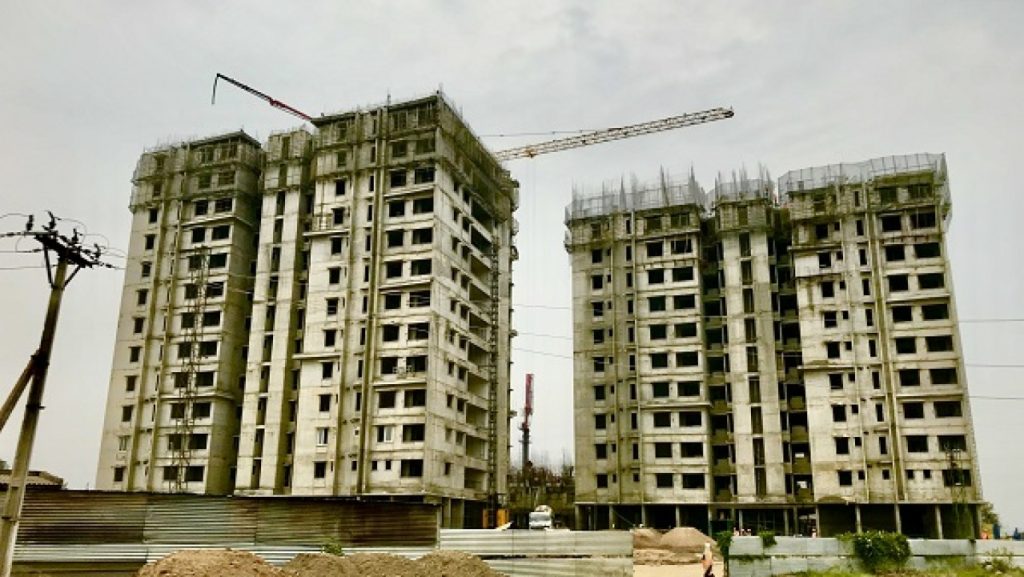Earthquakes are natural events that can have a serious impact on buildings, especially in growing urban centers like Chennai. While Chennai is not in a high-risk seismic zone, the gradual shift in construction practices has led to an increased focus on safety measures. One of the important steps developers are taking is adding earthquake-resistant features in the construction of Chennai flats.
Let us explore how these features impact the way flats are built and what makes them important in current construction trends.
Why Do Chennai Flats Need Earthquake Resistance?
Chennai lies in Seismic Zone III, which is considered a moderate risk area. Though earthquakes are not frequent here, their impact can still be severe if buildings are not constructed with structural stability in mind. With the growing demand for vertical housing and high-rise apartments, builders are now giving more importance to safety during seismic activity.
Even a mild earthquake can cause damage to poorly designed structures. This makes earthquake resistance not just an option but a vital part of planning and building Chennai flats.
Structural Design Changes
The first impact of adding earthquake-resistant features is seen in the structural layout. Engineers modify the design by:
- Using flexible materials that can handle stress.
- Adding shear walls to distribute seismic forces.
- Reinforcing beams and columns to hold the load during vibrations.
These changes increase the durability of the building and reduce the chances of collapse. Although the external look of the building may remain the same, the internal framework goes through significant upgrades.
Use of Modern Construction Materials
Another major change is the use of improved construction materials. Builders of Chennai flats are now preferring high-grade steel and concrete mixes that have better load-bearing capacity.
Materials like Fe500D or Fe550D steel rebars are commonly used because they offer better ductility. Similarly, M25 or M30 grade concrete is selected for foundations and columns to strengthen the base.
This shift not only adds to the safety but also improves the lifespan of the building. Such materials also help in reducing damage during sudden seismic shifts.
Foundation Strengthening
Earthquake-resistant construction gives high importance to the foundation. The foundation must absorb and transfer seismic energy without allowing cracks to form.
Construction companies are now using techniques like:
- Raft foundations for wide load distribution.
- Pile foundations in soft soil areas for better grip.
- Base isolators in select projects to reduce shock transfer.
These methods provide strong support, especially in areas where the soil may not be very stable. A good foundation is the key to withstanding vertical and lateral forces during an earthquake.
Planning and Load Distribution
A well-planned structure can reduce the risk of damage during an earthquake. For Chennai flats, architects work with structural engineers to plan the layout in a way that balances the weight throughout the building.
Here are some planning techniques used:
- Symmetrical design to avoid twisting during movement.
- Limiting large open spaces that reduce structural strength.
- Placing heavy elements like water tanks and generators at lower levels.
Such planning ensures that the building responds uniformly to seismic forces and avoids weak zones.
Legal and Safety Standards
Construction of Chennai flats must now follow safety codes laid out in IS 1893 (Indian Standard for Earthquake Resistant Design of Structures) and IS 456 (Code of Practice for Plain and Reinforced Concrete).
Local authorities in Chennai also require approval of structural drawings before starting construction. These steps are followed to make sure the building meets the safety expectations.
By following these standards, builders make the flats safer and more reliable for residents during seismic events.
Cost Factor
One of the common concerns about adding earthquake-resistant features is the cost. There is a slight increase in material and design expenses. However, this is justified by the benefits.
A well-built flat can avoid heavy repair costs after a natural disaster. Also, the resale value of properties with such features tends to be higher because people prefer safer living spaces.
So, while the initial cost may be higher, it pays off in the long run by offering better safety and protection.
How It Affects Flat Buyers
For buyers, earthquake-resistant flats offer peace of mind. When searching for Chennai flats, checking if the project follows seismic guidelines is a wise move.
Buyers can ask the developer questions like:
- Does the building follow IS codes for seismic design?
- What kind of foundation is used?
- Are materials tested for load resistance?
Such questions help in understanding the safety level of the flat. Being aware of these factors allows the buyer to make an informed decision.
Maintenance After Construction
Even after handing over the flats, maintenance plays a key role in keeping them safe. Regular checks on the structure, fixing minor cracks, and inspecting support systems can help in keeping the earthquake-resistant features functional.
Resident associations and maintenance teams must conduct routine structural audits at least once every few years.
Conclusion
Earthquake-resistant features are no longer reserved for high-risk zones. In a developing city like Chennai, where urban growth is fast, builders have started adapting smarter construction practices.
For Chennai flats, these features improve the overall safety and durability of the building. From structural design and material choice to planning and compliance with legal codes, several aspects go into making a flat resistant to earthquakes.
While the addition of such features may slightly increase costs, the benefit of having a safer and more reliable home outweighs the expense. For buyers and residents, earthquake resistance is becoming a key factor to consider while choosing their next home.
